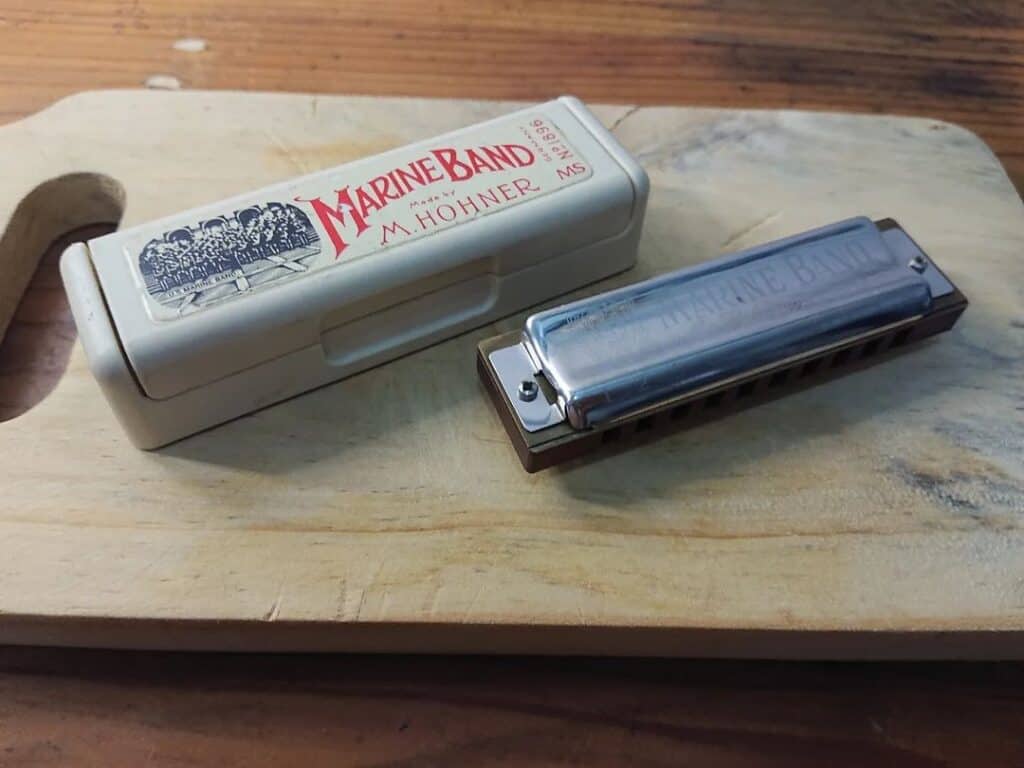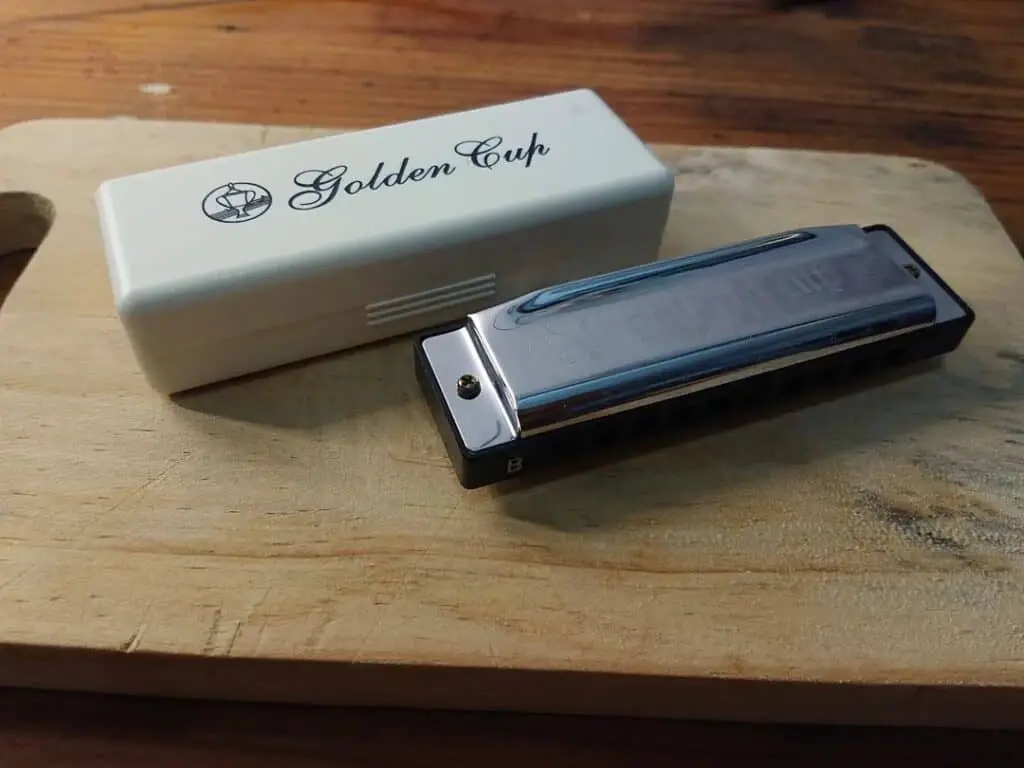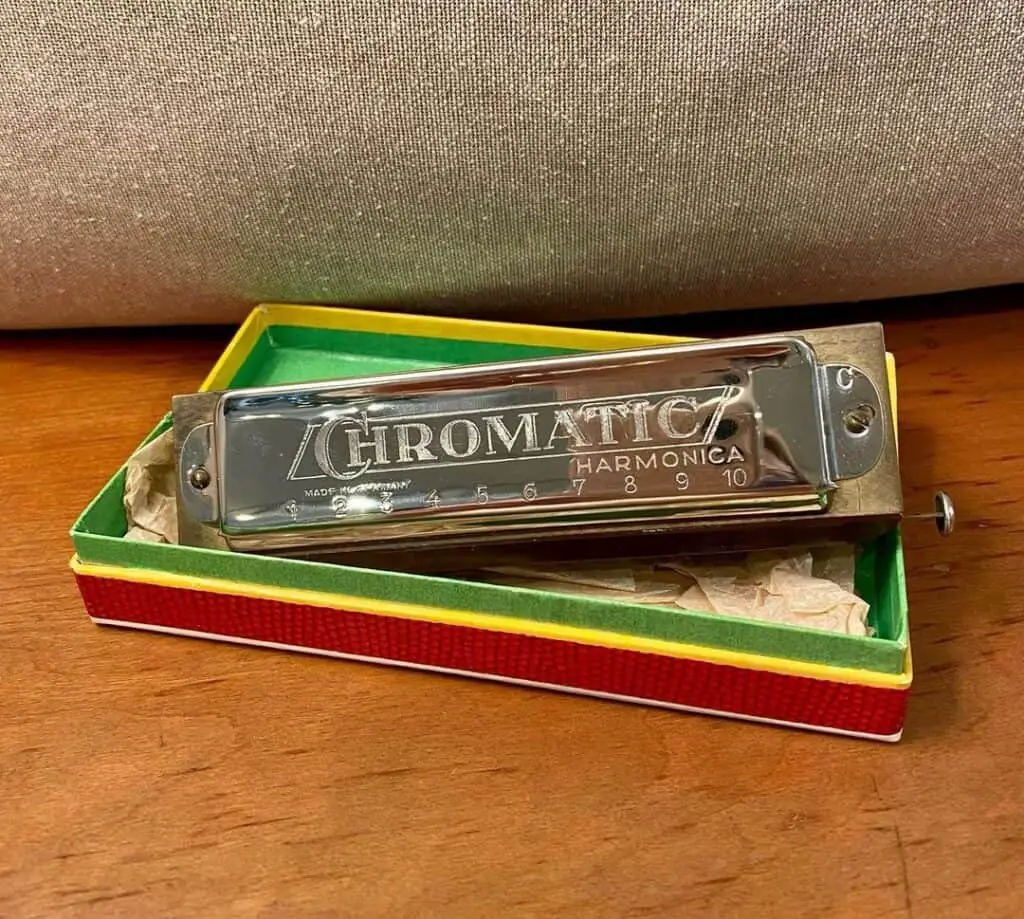The harmonica is perceived as a simple and cheap beginner’s instrument. However, some nuances are still to consider, and the most important one is its type. In this article, I will compare diatonic vs chromatic harmonica and explain which type meets which requirements.
Diatonic and Chromatic Harmonica Comparison
The main difference between diatonic and chromatic harmonica is the range of sounds they can produce.
- Diatonic harmonica has a simple construction that deprives you of flat and sharp notes.
- Chromatic harmonica provides a full range of notes within 3–4 octaves and suits playing more complicated melodies than diatonic one.

Diatonic
The term “diatonic” relates to a musical scale that contains intervals of five whole steps and two half steps. In practice, a harmonica has 10 holes, each producing 2 different notes: one when you inhale and the other when you exhale. Some models feature 14 holes, providing a wider range of octaves, but all the diatonic harmonicas are set in one key: imagine playing piano only with white keys. Their structures are also the same. These instruments are always assembled into three parts:
- A comb that creates chambers to direct airflow to a particular reed;
- A reed plate that holds reeds;
- The cover plates that close chambers and protect inner details.
What does it sound like?
The diatonic harmonica is the most simple, thus, the most popular type. Featuring no specific properties, it has 3 or 4 octaves (depending on the number of holes), which is a decent range of sounds for a small instrument like this. The combination of these properties makes a diatonic harmonica suitable both for professionals and beginners: the difference lies in the quality of the instrument, not in its construction.
You definitely know how a diatonic harmonica sounds since it is often used by different artists, no matter their genre. However, this instrument is mainly famous thanks to blues music; it is widely used in genres like rock, country, and pop. The sound can vary depending on its tuning. A classical way to tune a harmonica is called Richter tuning, but there are 7 other ways to tune a harmonica and change its sound.

Average price
As an instrument that can fulfill a wide range of users, from beginners to professionals, a diatonic harmonica significantly varies in cost. A decent diatonic harmonica for beginners costs no less than $30, while professional instruments’ prices start from $90
Who needs a diatonic harmonica? Pros and cons
The main advantage of the diatonic harmonica is that it is a relatively simple instrument to learn, yet there are no limits to your skills to get stronger. A wide range of models is available: they differ in quality and price, but you can easily find among them an instrument that perfectly fits:
- People who are not ready to spend a lot of money and only want to try;
- Beginners who need to sharpen their basic skills before selecting a more sophisticated instrument;
- Professional musicians who have specific requirements.
It is impossible to “grow out” of a diatonic harmonica – more likely, you will want to purchase a model of higher quality over time. However, if you like to experiment and want your experience to get wider and wider, you might feel a bit limited playing this kind of harmonica.

Chromatic
The chromatic harmonica is a modified diatonic harmonica: it was elaborated to provide a wider range of notes. Thus, its construction is more complex. The word “chromatic” refers to the instruments that give all the tones of the chromatic scale, which means you can play more difficult melodies with it. To make this possible, this kind of instrument features a slider that redirects the airflow and works as the black piano keys. A chromatic harmonica has at least 12 holes and provides no less than 3 octaves.
What does it sound like?
The bigger number of chambers and the more complex system of airflow directing makes chromatic harmonica’s sound richer and more diverse than a diatonic one. Due to its potential, this kind of instrument is usually used in jazz or even classical music. However, using a slider is not obligatory, so it is still possible to play melodies that require a smaller range of notes; thus, a chromatic harp also can be used for other genres.
Average price
Because of its higher complexity, a chromatic harp is rarely considered a beginner’s instrument. People who start straight from this type tend to have experience with other instruments like piano or guitar, for example. Moreover, manufacturing requires more time and resources. Thus, whatever quality a chromatic harmonica is, it is counted as a professional instrument, which is reflected in its cost. An average chromatic harp’s cost starts from $120 and reaches $250.
Who needs a chromatic harmonica? Pros and cons
A chromatic harmonica is mostly chosen due to its full range of notes. It can be used for various melodies and genres, from pop to classic. Harmonica is a relatively easy instrument to learn, and switching from diatonic to chromatic doesn’t require serious effort. A chromatic harp can fulfill
- Hobbyists with some experience in piano, guitar, or brass music.
- Professional musicians who want to discover a new instrument.
The only nuance about this type of harmonica is that it should be a thoughtful purchase. Their price is higher than diatonic. Therefore, it is not the best option if you are not sure about your wish.
Signs of a Low-Quality Instrument
Both kinds of the harmonica are simple and accessible compared to other instruments. However, diatonic and chromatic harps are not always interchangeable. The differences between them are not crucial. All you need to succeed is enough time to practice and a proper instrument.
- Avoid second-hand harmonicas. This instrument gets broken and wears out easily.
- Check the quality of the assembly. The joints should be tight, preventing excessive air from entering chambers.
- Pay attention to the material of the comb. It should be both durable and not hurt your lips.

FAQ on Types of Harmonicas
Here are the most popular practical questions that concern the two most popular kinds of harps. They help summarize all the theoretical information above.
Which harmonica is best for beginners?
The diatonic harmonica is considered the best option for those who only learn to play music. It has a simple construction but provides a decent range of notes. However, people with experience playing other instruments like piano or guitar can start straight with a chromatic harmonica.
Is chromatic harmonica hard to play?
The chromatic harp is not the best instrument for beginners; it is a bit more difficult to play if you have no experience playing music at all. However, the harmonica is a simple instrument, and the differences in its kinds are not significant.
Can you play chords on a chromatic harmonica?
The main feature of a chromatic harmonica is the same range of notes a guitar provides. Therefore you can play similar chords, but only simple ones. It is physically impossible to reach all the needed notes with your mouth.

Chromatic vs Diatonic
There is no crucial difference between chromatic and diatonic harmonica. The diatonic harmonica is an analog of a piano without black keys, while chromatic allows a full spectrum of notes.
Are you looking for your first instrument or want to try something different from your experience? Please share in the comments.
